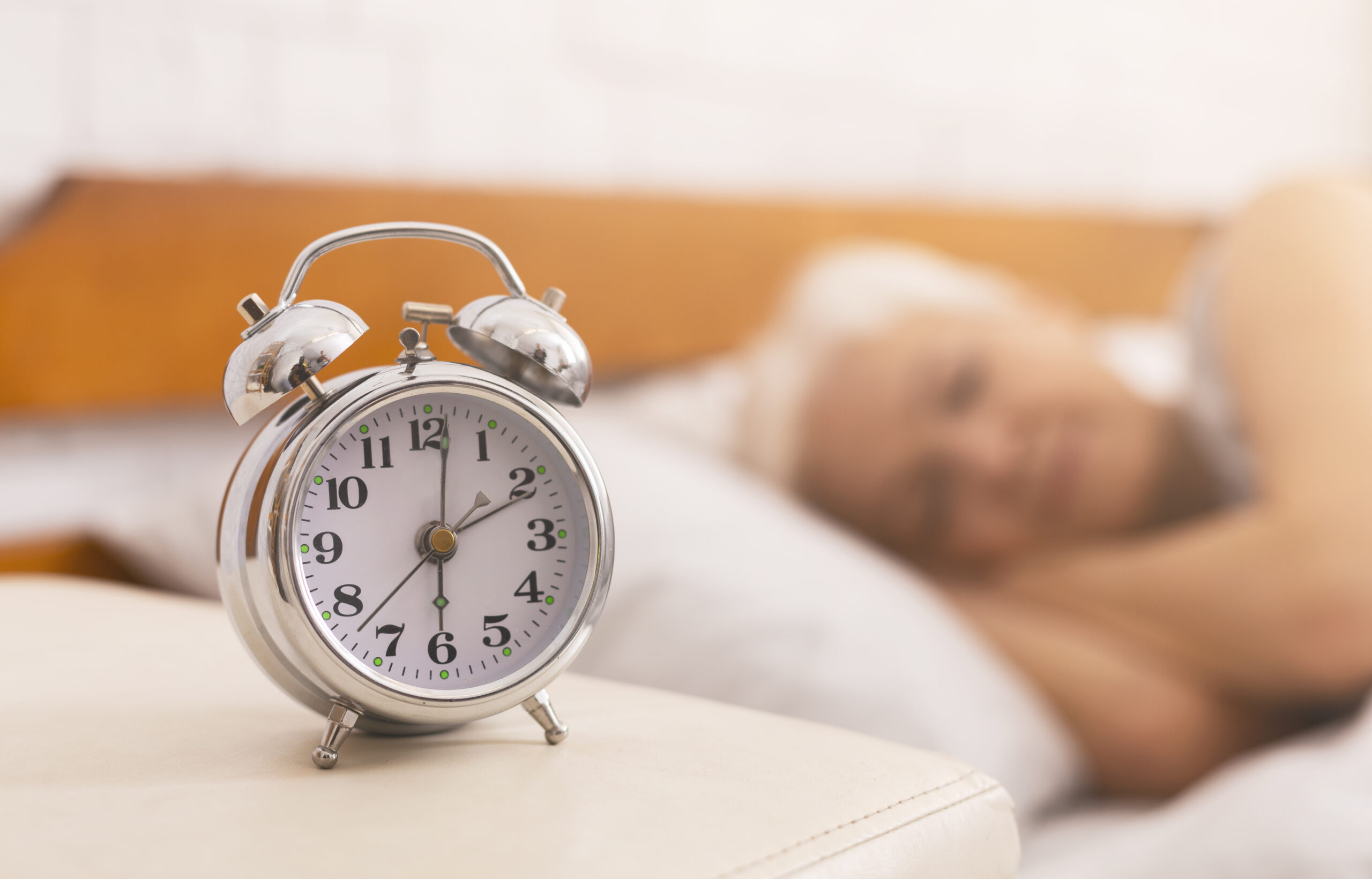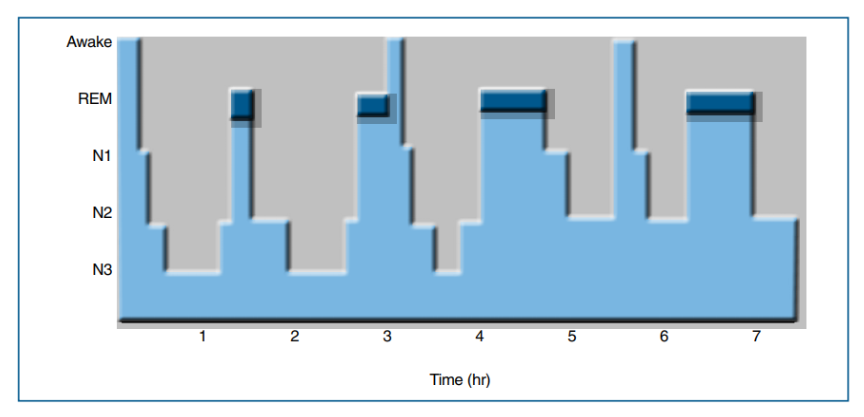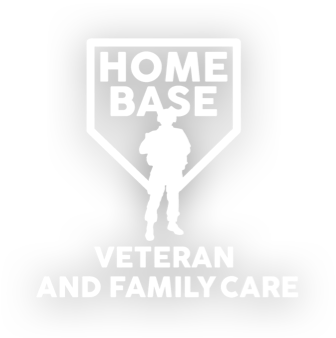Sleep 101: The Basics

“In this world, nothing can be said to be certain, except death and taxes and a poor night’s sleep.” Okay, we may have taken some liberty with Benjamin Franklin’s quote have experienced one or more night(s) of poor sleep. For some, the sleep disturbance is minor, and for others, it can be life-altering. Our goal for this series is to provide some suggestions for sleep improvement, but first, let’s take some time to learn about the basics of sleep.
Sleep Stages
Our sleep can get broken into 2 main sleep stages known as REM (Rapid Eye Movement) sleep and Non- REM sleep.
Non- REM sleep makes up about 75-80% of our sleep and is broken into 4 additional stages known as N1, N2, N3, N4. Sleep scientists are a creative bunch, aren’t they?
N1 Stage: characterized by very light sleep, it’s not refreshing, and it is typically a bridge to deeper sleep stages
N2 Stage: deeper sleep than N1, harder to wake someone up from, occupies about 40-50% of night’s sleep in healthy adults
N3 & N4 Stage: the stage where we get the deepest sleep, thought to be where the body rebuilds and restores itself
REM Sleep is characterized by rapid eye movements and is where most of our dreaming occurs. Our heart rate and breathing become less regular, there is increased blood flow to the brain, and the body’s muscles go into a state of relative paralysis which prevents us from “acting out” the dreams occurring. We also may notice in this stage that our face, fingers, and legs twitch, which is completely normal.
Now that we have an idea of the basic sleep stages, let’s learn how they get put together in something called the Sleep Cycle.
The Sleep Cycle
In healthy adults, Non- REM and REM sleep stages occur in consistent and predictable cycles. Sleep cycles can seem confusing when first introduced, follow along with the graph below.

Sleep typically begins with Non-REM sleep where we move from wakefulness to N1, which typically takes 30 minutes or less.
We then pass through a longer period of N2. About 30-45 min into the night stage N3 emerges and lasts anywhere between a few minutes to an hour, depending on a variety of factors including the individual’s age. It may then be followed by a brief return of stage N2.
About 70-90 minutes into the night is when the first REM sleep occurs, which is usually short and followed by a return to stage N2. This is considered the end of the first sleep cycle.
The second sleep cycle consists of some stage N3 sleep return. At about 3 hours into the night is when our second REM sleep period occurs, typically longer than the first. For the rest of the night REM sleep alternates between the various stages of Non–REM sleep in roughly 90 minute cycles.
KEY TAKEAWAYS: As you can see on the graph, the deepest sleep, N3, occurs early in the sleep cycle. Since most people with difficulty sleeping sleep at least 3 hours (when most stage N3 occurs) they are rarely deprived of this critical sleep stage. EVEN if you are getting little sleep, you are still able to access the most restorative and beneficial sleep stage.
We’ve learned about the stages of sleep and the sleep cycle- now you may be thinking why does this matter in the grand scheme of sleep?
The Importance of Sleep
My guess is that you probably already know that sleep is important, but have you ever asked yourself why we sleep or what it does for us?
Believe it or not, scientists have not agreed on any 1 reason why we sleep, rather they have found multiple reasons sleep is crucial for our survival.
Within the brain, sleep enriches our ability to learn, memorize, and make logical decisions and choices. Sleep also helps recalibrate our emotional brain circuits which essentially allows us to manage future social and psychological challenges with cool-headed composure.
Sleep repairs our immune system, which helps prevent infection and ward off sickness. It helps regulate appetite and control body weight through healthy food selection vs. impulsive decisions. Sleep also impacts our cardiovascular system (think of your heart) by lowering our blood pressure.
Now that you can see how much the brain and body do while sleep you may be thinking, “Well, how much sleep do I need to get every night?”
According to the American Academy of Sleep Medicine, healthy adults (ages 18-60) are recommended 7-9 hours of sleep every night.
Now to be clear, 2 out of 3 adults don’t get the recommended dose of sleep. YOU ARE NOT ALONE if you get less than 7 hours.
The standard recommendation of 7-9 hours will vary from person to person and is affected by a person’s age, prior life circumstances, illness, genetics, environment, etc.
Any sleep, no matter how little is better than nothing!
So what now?
The solid foundation that you just built by learning the basics of sleep will help you implement the strategies and information that we will share with you. Stay tuned with us at Home Base and Operation Health@Home to learn about what to do when waking up in the middle of the night, substances that affect sleep, difficultly falling asleep, napping, and MUCH MORE!
If you have trouble sleeping or would like to learn more about how mental health affects sleep, please reach out to us! Visit homebase.org/connect2care to learn more about our clinical programs or call (617) 724-5202.
 About the Author: Erika Lundgren, LCSW, is a clinical social worker at Home Base. She completed her Bachelor of Science in Rehabilitation Services at the University of Maine at Farmington and her Masters of Social Work at the University of New Hampshire. Erika previously worked at the Manchester VA providing support and resources to veterans and their caregivers within the Caregiver Support Program. She also completed an internship at the Krempels Center, a nonprofit organization dedicated to improving the lives of people living with brain injury, facilitating groups, and offering support services for new members.
About the Author: Erika Lundgren, LCSW, is a clinical social worker at Home Base. She completed her Bachelor of Science in Rehabilitation Services at the University of Maine at Farmington and her Masters of Social Work at the University of New Hampshire. Erika previously worked at the Manchester VA providing support and resources to veterans and their caregivers within the Caregiver Support Program. She also completed an internship at the Krempels Center, a nonprofit organization dedicated to improving the lives of people living with brain injury, facilitating groups, and offering support services for new members.


 Home Base
Home Base